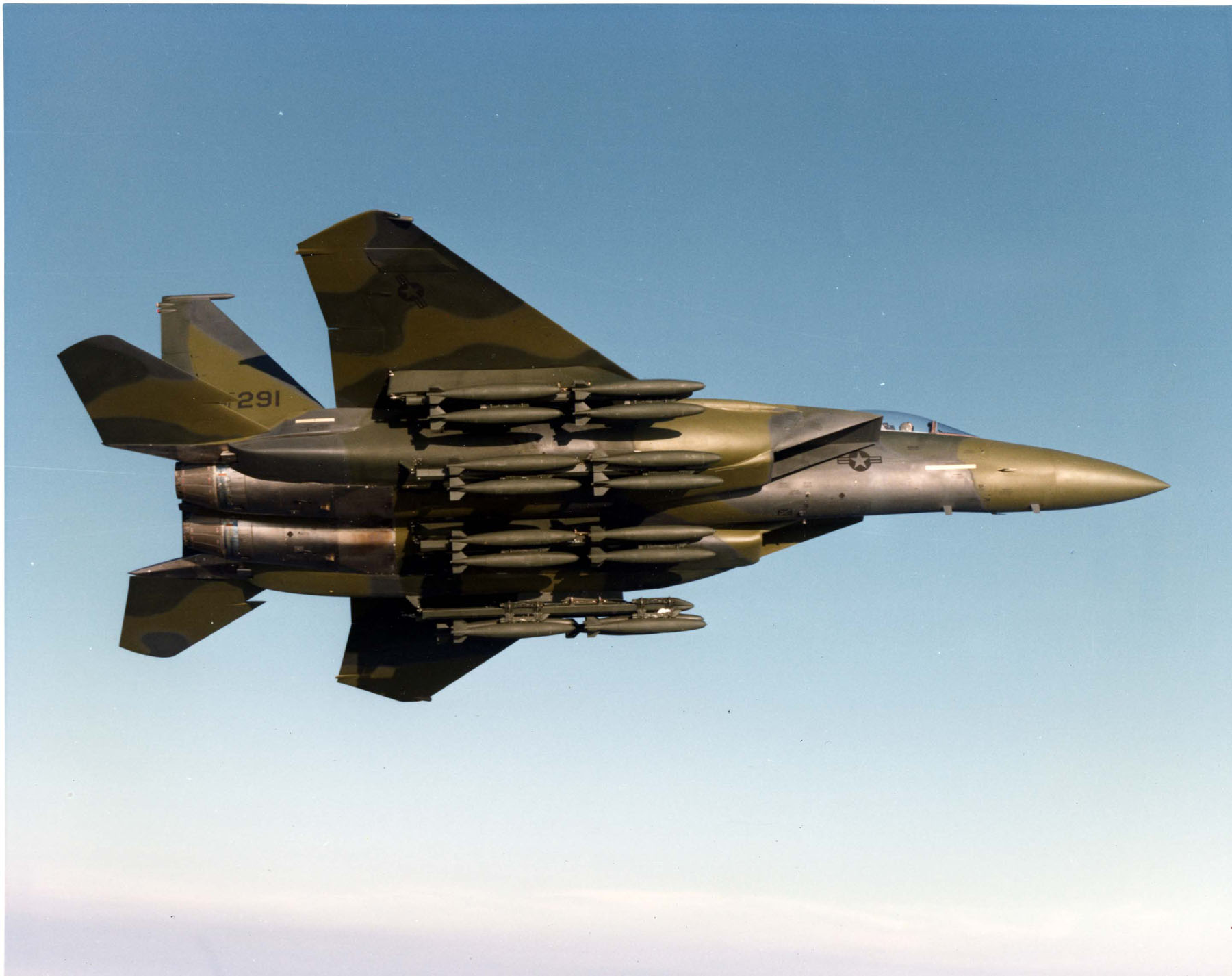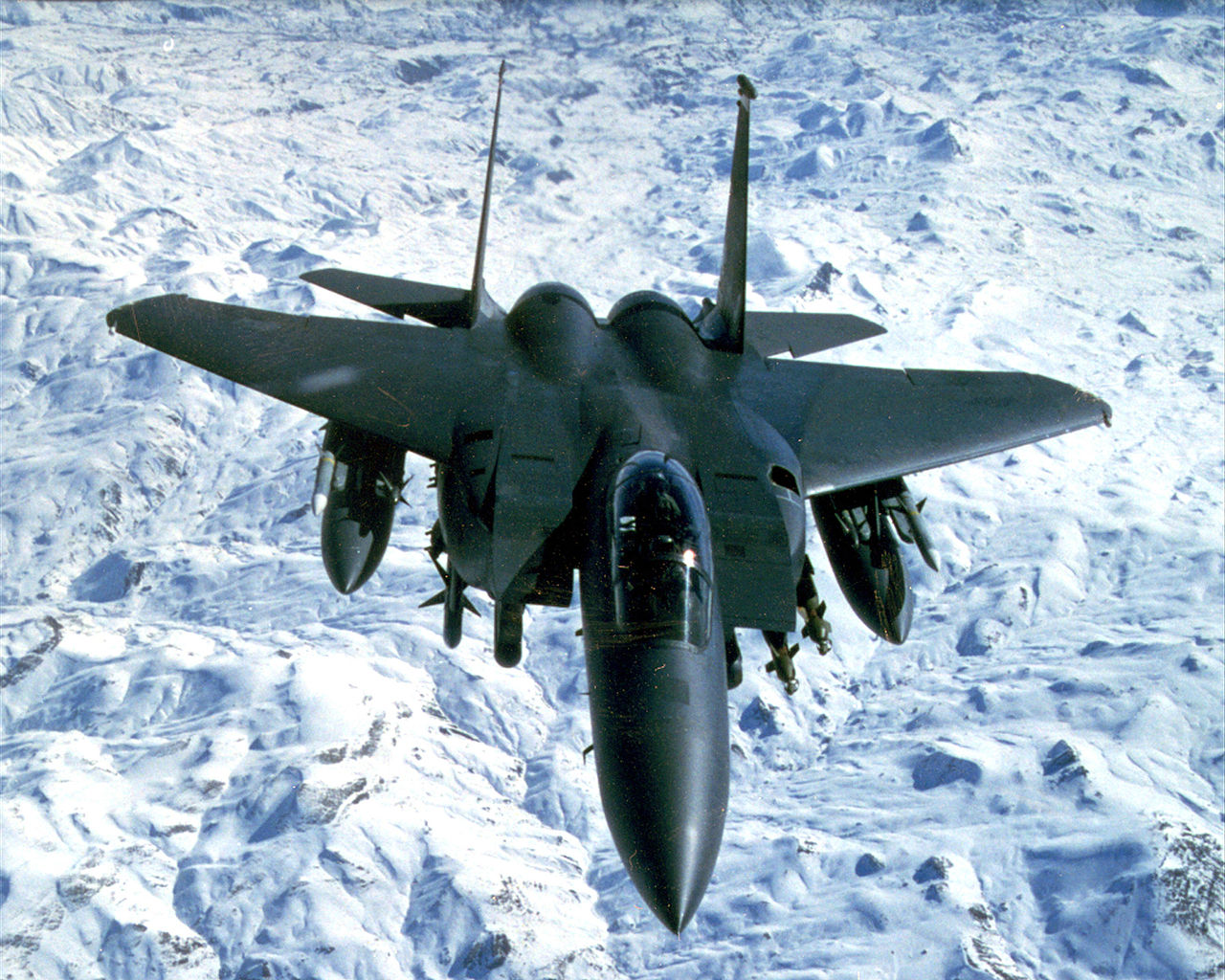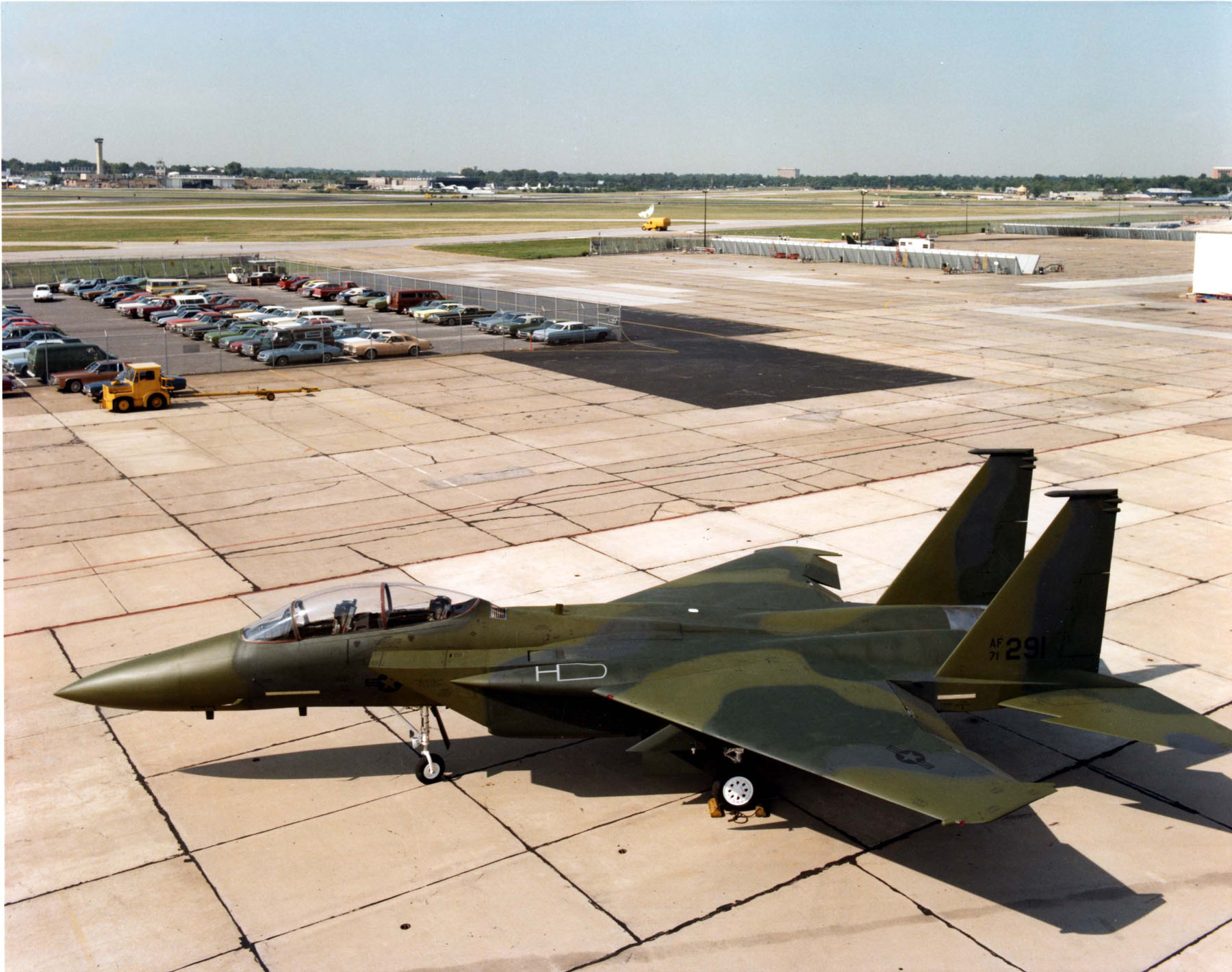

The Strike Eagle was begun as a private venture by McDonnell Douglas. Designed to be operated by a pilot and a weapons system officer (WSO), the airplane can carry bombs, missiles and guns for a ground attack role, while maintaining its capability as an air superiority fighter. It’s airframe was a strengthened and its service life doubled to 16,000 flight hours. The Strike Eagle became an Air Force project in March 1981, and went into production as the F-15E. The first production model, 86-0183, made its first flight 11 December 1986.
The McDonnell Douglas F-15E Strike Eagle is a two-place twin-engine multi-role fighter. It is 63 feet, 9 inches (19.431 meters) long with a wingspan of 42 feet, 9¾ inches (13.049 meters) and height of 18 feet, 5½ inches (5.626 meters). It weighs 31,700 pounds (14,379 kilograms) empty and has a maximum takeoff weight of 81,000 pounds (36,741 kilograms). The F-15E is powered by two Pratt and Whitney F100-PW-229 turbofan engines which produce 17,800 pounds of thrust (79.178 kilonewtons) each, or 29,100 pounds (129.443 kilonewtons) with afterburner.

The Strike Eagle has a maximum speed of Mach 2.54 (1,676 miles per hour, (2,697 kilometers per hour) at 40,000 feet (12,192 meters) and is capable of sustained speed at Mach 2.3 (1,520 miles per hour, 2,446 kilometers per hour). Its service ceiling is 60,000 feet (18,288 meters). The fighter-bomber has a combat radius of 790 miles (1,271 kilometers) and a maximum ferry range of 2,765 miles (4,450 kilometers).
Though optimized as a fighter-bomber, the F-15E Strike Eagle retains an air-to-air combat capability. The F-15E is armed with one 20mm M61A1 Vulcan 6-barrel rotary cannon with 512 rounds of ammunition, and can carry four AIM-9M Sidewinder heat-seeking missiles and four AIM-7M Sparrow radar-guided missiles, or a combination of Sidewinders, Sparrows and AIM-120 AMRAAM long range missiles. It can carry a maximum load of 24,500 pounds (11,113 kilograms) of bombs and missiles for ground attack.
71-0291 remained at McDonnell Douglas as a dedicated test aircraft. During that time it was painted in many different camouflage schemes. In these photographs, it is painted in the “European 1” camouflage.
71-0291 was retired from the active inventory in the early 1990s and was used for battle damage repair training at Warner Robins Air Force Base, Georgia. It is reported to be on display at the Royal Saudi Air Force Museum at Riyadh, Saudi Arabia, in RSAF colors and markings.

© 2017, Bryan R. Swopes